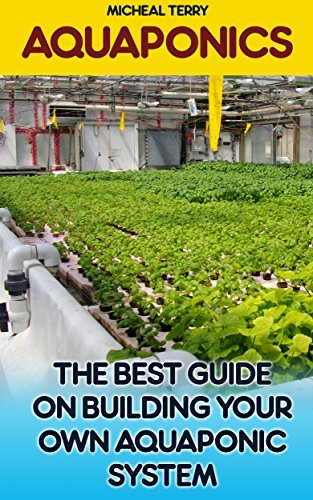
Building Your Own Sustainable Aquaponic System: A Step-by-Step Guide
Dreaming of fresh, homegrown produce without the endless toil of traditional gardening? Aquaponics offers a sustainable and rewarding solution, combining aquaculture (raising fish) with hydroponics (growing plants without soil). This guide provides a comprehensive, step-by-step approach to constructing your own aquaponic system from scratch, ensuring you harvest both delicious fish and vibrant vegetables.
Phase 1: Planning Your Aquaponic Paradise
Before diving into construction, meticulous planning is crucial. Consider the scale of your system â€" a small, tabletop setup for herbs or a larger, more ambitious system for a wider variety of produce and fish. Determine your budget, factoring in materials, fish, and initial setup costs. Research suitable fish species â€" tilapia, catfish, and goldfish are popular choices â€" understanding their growth rates and waste production. Select plants compatible with your chosen fish; leafy greens like lettuce and basil thrive in aquaponic environments. Finally, choose a location with ample sunlight and access to a water source.
Choosing the Right System Design
Several aquaponic system designs exist, each with its own advantages and disadvantages. Media bed systems utilize a bed filled with gravel or clay pebbles where plants' roots grow, while the water, rich with fish waste, circulates through. Deep water culture (DWC) systems suspend plant roots directly in nutrient-rich water. Media bed systems are generally easier for beginners, offering better water quality stability. Thoroughly research each type to determine the best fit for your space, budget, and experience level.
Phase 2: Gathering Your Materials
Once your design is finalized, gather the necessary materials. This list varies depending on your chosen system, but generally includes:
- Water tank: Choose a food-grade material like plastic or fiberglass, ensuring it’s appropriately sized for your fish and system capacity.
- Growing media (for media bed systems): Clay pebbles, gravel, or lava rock provide excellent aeration and support for plant roots. Ensure it's thoroughly washed before use.
- Grow bed: This can be constructed from wood, plastic, or other durable materials. Ensure proper drainage and water circulation.
- Air pump and air stones: These oxygenate the water, keeping your fish healthy and preventing the build-up of harmful gases.
- Submersible pump: This circulates water from the fish tank to the grow bed and back again.
- Pipes and fittings: For connecting the different components of your system, ensuring water flows smoothly.
- Plants and fish: Start with a small number to avoid overwhelming your system initially.
Phase 3: Constructing Your System
With your materials assembled, begin construction. Follow your chosen system’s design specifications carefully. Begin with the fish tank, ensuring it’s securely placed and properly sealed to prevent leaks. Then, construct the grow bed, ensuring proper drainage and a level base. Carefully connect the pump, pipes, and air stones, ensuring a smooth, continuous water flow between the tank and grow bed. Finally, add your chosen growing media to the grow bed, ensuring it’s evenly distributed.
Plumbing and Water Circulation â€" The Heart of Your System
Proper plumbing is paramount. Leaks can disrupt the delicate balance of your aquaponic system. Use high-quality, food-grade pipes and fittings. Test the system thoroughly before adding fish and plants to identify and rectify any leaks or flow issues. Ensure your pump provides adequate water circulation, promoting oxygenation and efficient nutrient delivery.
Phase 4: Planting and Stocking
Once your system is fully functional and leak-free, you can add your plants and fish. Start slowly, allowing the system to establish its nitrogen cycle before introducing a large number of organisms. Begin with a small number of hardy plants, gradually adding more as the system matures. Similarly, introduce your fish gradually, monitoring water parameters closely. Regular water testing will help you maintain the ideal environment for both your fish and plants.
Phase 5: Monitoring and Maintenance
Aquaponics requires ongoing monitoring and maintenance. Regularly test water parameters (pH, ammonia, nitrite, nitrate) to ensure a healthy environment. Clean your system regularly, removing any accumulated debris or algae. Harvest your plants and fish as needed, maintaining a balanced ecosystem. Remember, patience and consistent monitoring are key to a thriving aquaponic system. Enjoy the fruits (and fish!) of your labor!










